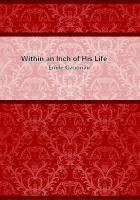Why do the two boletes with the red tubes, the purple bolete and the satanic bolete, change into a dark gruel? I have an inkling of the reason. Both of them turn blue, with an admixture of green. Athird species, the bluish bolete (Boletus cyanescens, BULL., var. lacteus, LEVEILLE), possess remarkable color sensitiveness. Bruise it ever so lightly, no matter where, on the cap, the stem, the tubes of the undersurface: forthwith, the wounded part, originally a pure white, is tinted a beautiful blue. Place this bolete in an atmosphere of carbonic acid gas. We can now knock it, crush it, reduce it to pulp; and the blue no longer shows. But extract a fragment from the crushed mass: immediately, at the first contact with the air, the matter turns a most glorious blue. It reminds us of a process employed in dyeing. The indigo of commerce, steeped in water containing lime and sulfate of iron, or copperas, is deprived of a part of its oxygen; it loses its color and becomes soluble in water, as it was in the original indigo plant, before the treatment which the plant underwent. A colorless liquid results. Expose a drop of this liquid to the air. Straightway, oxidization works upon the product: the indigo is reformed, insoluble and blue.
This is exactly what we see in the boletes that turn blue so readily. Could they, in fact, contain soluble, colorless indigo?
One would say so, if certain properties did not give grounds for doubt. When subjected to prolonged exposure to the air, the boletes that are apt to turn blue, particularly the most remarkable, Boletus cyanescens, lose their color, instead of retaining the deep blue which would be a sign of real indigo. Be this as it may, these mushrooms contain a coloring principle which is very liable to change under the influence of the air. Why should we not regard it as the cause of the black tint when the maggots have liquefied the boletes which turn blue? The others, those with the white flesh, the edible bolete, for instance, do not assume this asphalty appearance once they are liquefied by the grubs.
All the boletes that change to blue when broken have a bad reputation; the books treat them as dangerous, or at least open to suspicion. The name of Satanic awarded to one of them is an ample proof of our fears. The caterpillar and the maggot are of another opinion: they greedily devour what we hold in dread. Now here is a strange thing: those passionate devotees of Boletus Satanas absolutely refuse certain mushrooms which we find delightful eating, including the most celebrated of all, the oronge, the imperial mushroom, which the Romans of the empire, past masters in gluttony, called the food of the gods, cibus deorum, the agaric of the Caesars, Agaricus caesareus. It is the most elegant of all our mushrooms. When it prepares to make its appearance by lifting the fissured earth, it is a handsome ovoid formed by the outer wrapper, the volva. Then this purse gently tears and the jagged opening partly reveals a globular object of a magnificent orange. Take a hen's egg, boil it, remove the shell: what remains will be the imperial mushroom in its purse. Remove a part of the white at the top, uncovering a little of the yolk. Then you have the nascent imperial. The likeness is perfect. And so the people of my part, struck by the resemblance, call this mushroom lou rousset d'iou, or, in other words, yolk of egg. Soon, the cap emerges entirely and spreads into a disk softer than satin to the touch and richer to the eye than all the fruit of the Hesperides. Appearing amid the pink heather, it is an entrancing object.
Well, this gorgeous agaric (Amanita caesarea, SCOP.), this food of the gods the maggot absolutely refuses. My frequent examinations have never shown me an imperial attacked by the grubs in the field.
It needs imprisonment in a jar and the absence of other victuals to provoke the attempt; and even then the treacle hardly seems to suit them. After the liquefaction, the grubs try to make off, showing that the fare is not to their liking. The Mollusk also, the Arion, is anything but an ardent consumer. Passing close to an imperial mushroom and finding nothing better, he stops and takes a bite, without lingering. If, therefore, we required the evidence of the insect, or even of the Slug, to know which mushrooms are good to eat, we should refuse the best of them all. Though respected by the vermin, the glorious imperial is nevertheless ruined not by larvae, but by a parasitic fungus, the Mycogone rosea, which spreads in a purply stain and turns it into a putrid mass. This is the only despoiler that I know it to possess.
A second amanita, the sheathed amanita (Amanita vaginata, BULL.), prettily streaked on the edges of the cap, is of an exquisite flavor, almost equal to the imperial. It is called lou pichot gris, the grayling, in these parts, because of its coloring, which is usually an ashen gray. Neither the maggot nor the even more enterprising Moth ever touches it. They likewise refuse the mottled amanita (Amanita pantherina, D. C.), the vernal amanita (Amanita verna, FRIES) and the lemon-yellow amanita (Amanita citrina, SCHAEFF.), all three of which are poisonous. In short, whether it be to us a delicious dish or a deadly poison, no amanita is accepted by the grubs. The arion alone sometimes bites at it.
The cause of the refusal escapes us. It were vain, speaking of the mottled amanita, for instance, to allege as a reason the presence of an alkaloid fatal to the grubs, for we should have to ask ourselves why the imperial, the amanita of the Caesars, which is wholly free from poison, is rejected no less uncompromisingly than the venomous species. Could it perhaps be lack of relish, a deficiency of seasoning for stimulating the appetite? In point of fact, when eaten raw, the amanitas have no particular flavor.















